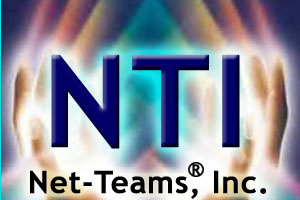 |

The Basics of Value Investing |
|
|
Submitted by Janeane Carnagie
| RSS Feed
| Add Comment
| Bookmark Me!
Value Investing refers to a philosophy or practice of buying stocks that are fundamentally sound, but the stock price is below its obvious value. There are various indicators that Value Investors use to determine that a company is both sound and the stock price is undervalued. For the Value Investor, perhaps more than any other style of investor, is more concerned with the business and its fundamentals than other influences on the stock’s price.
Fundamentals, such as dividends, earnings growth, cash flow, and book value are more critical than market forces on the stock’s price. Value investors are generally buy and hold investors. They will hold a stock for long term periods and are not concerned with short term swings in the stock price.
When the Value Investor determines that the fundamentals are sound, but the stock is trading at a price below its obvious value, he or she knows that this is a potential investment candidate. The assumption is that the market has incorrectly undervalued the stock. Conversely, when the market corrects that mistake, the stock’s price should increase towards the obvious value point.
How do Value Investors find a potential investment?
- price to earnings ratio is in the bottom 10 percentile for its sector
- debt to equity ratio is less than 1
- price to book value ratio is less than 1
- PEG value of less than 1
- Stock value is trading at 60-70% of its intrinsic value
The P/E (Price to Earnings Ratio) is calculated by dividing the current price of the stock by the annual earnings per share. The higher the P/E the more earnings growth investors will expect and the higher premium they are willing to pay for that anticipated growth.
Debt to equity is calculated by dividing the total liabilities by the shareholders equity.
Price to Book Value is calculated by taking the current price per share and dividing by the book value per share.
The PEG is calculated by taking the P/E and dividing it by the projected growth in earnings.
The intrinsic value of a stock is a complicated process and is considered an inexact science by most investors. The intrinsic value of a company or an asset is generally determined based on an underlying perception of the value. Brand Name, Goodwill, and barriers to entry in a market are some of the factors that will determine the intrinsic value of a stock. You may be interested in looking at MorningStar.com for helping you determine a stocks intrinsic value. They calculate a number called “fair value” which is similar to intrinsic value.
Many investors have increased their wealth substantially using a value-based approach to investing. This overview of Value Investing suggests a philosophy that works well over time if you buy carefully and use patience to hold for the long term.
|
|
 |

|
|
LinkedIn Recommendation:
 Jeff Brodsky - Director of Operational Excellence at Park N' Fly - I worked with Teo during the early stages of Net-Teams and he is a powerhouse with an extraordinary ability to bring together teams and ignite them behind his vision. He has a great understanding of the process of building companies through building a vision and a team and developing capital and has been a pioneer in social networking in the Atlanta Mtero market. - January 23, 2011, Jeff worked directly with Teo at Net-Teams, Inc. Jeff Brodsky - Director of Operational Excellence at Park N' Fly - I worked with Teo during the early stages of Net-Teams and he is a powerhouse with an extraordinary ability to bring together teams and ignite them behind his vision. He has a great understanding of the process of building companies through building a vision and a team and developing capital and has been a pioneer in social networking in the Atlanta Mtero market. - January 23, 2011, Jeff worked directly with Teo at Net-Teams, Inc. |
|
Featured [Investing] Articles:
|
 |
